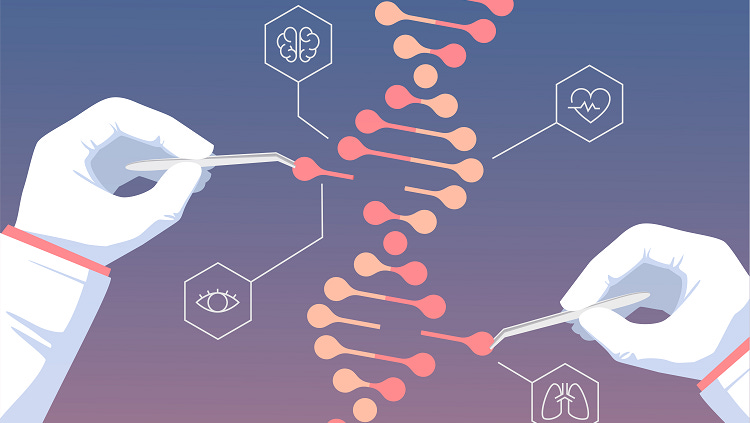Ethical Misconceptions About Genetic Engineering
Skeptical about the process? Let's discuss common concerns.
Photo Source: istock.com/Panuwach via BrainFacts
It has been 10 years since CRISPR was founded, and as genetic engineering breakthroughs grow more prominent, so do ethical misconceptions surrounding the process.
Jennifer Doudna, Nobel Prize–winning co-inventor of CRISPR gene-editing technology, shared her thoughts in The Atlantic, along with some important ethical questions.
“Powerful technology, of course, comes with the potential for misuse, and CRISPR’s powers raise important questions,” said Doudna in The Atlantic. “How do we ensure that genome editing is deployed only when medically necessary? Who determines what medically necessary means? How do we ensure that those in need have access when people or companies with money and power cut in line?”
If you are a bit skeptical about genetic engineering, or want to understand more, here are a few common misconceptions about the process.
Are there regulations in place?
After the CRISPR babies incident in 2018, there was a large debate about regulation. To summarize the debacle, He Jiankui, a genetic engineer in China, altered the genes of twin girls’ embryos without consent to eliminate a gene linked to HIV susceptibility.
What most people don’t know is that Jiankui was put in jail for three years. Also, according to Doudna, this incident took place three years after she called for a stop to heritable germline editing. While the situation should not have occurred, it is important to understand that actions like those of Jiankui are not tolerated. Scientists work with regulators to make sure genetic engineering is safe.
“Without these guardrails, we may not only harm humans and our environment, but also risk societal backlash against the very technologies that could preserve and improve our health and make our planet more livable,” said Doudna in The Atlantic.
Is genetic engineering intended to benefit everyone?
One of Doudna’s questions regarded accessibility to those in need or without power. The World Health Organization (WHO) recognized this matter and stated it is necessary to benefit all people to prevent health inequity between countries. Genetic engineering can help treat diseases among populations, and organizations are showing intention to make this effort widespread when deployed.
Is genetic engineering a risk for ecosystems?
Genetic engineering can treat diseases among populations, which is intended to stop the occurrence of these diseases in future generations. To make these changes heritable, it can alter germ lines (eggs, sperm, embryos). However, without governance they could risk entire ecosystems.
In our article from October 5, we discussed how CRISPR in crops can help make crops more nutritious and less susceptible to diseases. This outside factor doesn’t alter human genes directly, but impacts our food source, as well as reducing climate change and improving global food security. This is one example of CRISPR helping our ecosystem.
Do we have enough precision to be doing this?
Genetic engineering is a very precise, difficult job. Think about how small cells and embryos are. “Breaking DNA in these cells can lead to drastic rearrangements in the chromosomes,” according to The New York Times.
New types of genetic engineering, such as prime editing, will hopefully improve the ability for scientists to make precise changes. CRISPR was founded 10 years ago, and many new tools and advancements have been made. CRISPR/Cas9 is a recent innovation that helps modify, delete or correct precise regions of our DNA.
Despite ethical concerns and misconceptions regarding genetic engineering, advancements have thus far provided many advantages for using this process. We hope this piece helped answer some questions you may have about genetic engineering.
Best,
Ariana for the Don’t Count Us Out Yet Team





